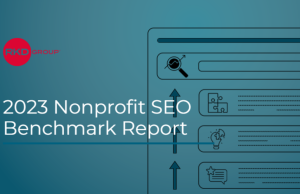Everyone has had 18 months of the pandemic to learn Zoom, play with fanciful backgrounds, laugh at jokes about wearing (or not wearing) pants to the virtual meeting. Now what’s needed are concrete and reliable plans for what comes next.
Nonprofits managers are as confused as the rest of society about returning to the office. Some organizations have pushed back the date for coming back to the office. Recent surveys suggest that fully half of nonprofits will probably continue to work remotely. Others have proposed hybrid work models. Some fundraising events that were all set to “go live” have been cancelled or have reverted to online formats.
Nonprofits have company: Many major corporations and school systems are also trying to do strategic return planning in the midst of the evolving COVID-19 ecosystem.
There might be an upside to continued remote work. Nonprofit managers might consider ways and means to do their business over the internet and take advantage of the “hardship” in ways that might yield benefits going forward.
- Cost savings. One accomplished and respected New York City nonprofit has decided to become totally virtual. This means no more Manhattan rental costs and the release of money for other programs and services. Savings can be personal: employees often have to carry significant travel costs to get to and from the office—with remote work, they save money.
- Inclusion. A nationwide Zoom call can allow scattered “stakeholders” to take part in planning and can open up conversations that would have been impossible if everyone had to gather in a room. And virtual conferences can hold many more people than can fit in a physical space. Finally, a webinar eliminates the annoyances of getting all dressed up and hauling across town to the gathering. Pants-optional sessions are great ways to “meet the funder.”
- Deeper candidate pool. Remote work allows a nonprofit to hire the right person for the job even if that person lives far away from the office. Geography no longer dictates employability. This opens the job market for rural workers and those who don’t have transportation options.
- Work/life balance. We’ve talked about it for years but now we might actually achieve it. Working remotely means the possibility of being available for an afterschool ice cream run with your kids. It might mean an exercise break in the middle of the morning. It certainly means clicking over to a music video without a disapproving boss or coworker frowning at you.
What about productivity? Evidence suggests remote workers are 35-40 percent more productive. Remote workers are much less likely to be absent. Virtual workspaces help reduce the carbon footprint on a battered planet.
One size does not fit all and each nonprofit will have to examine its own set of circumstances. It’s probably a good idea to consider the opportunities of working remotely, pandemic or not. © Copyright 2021 The Grantsmanship Center









